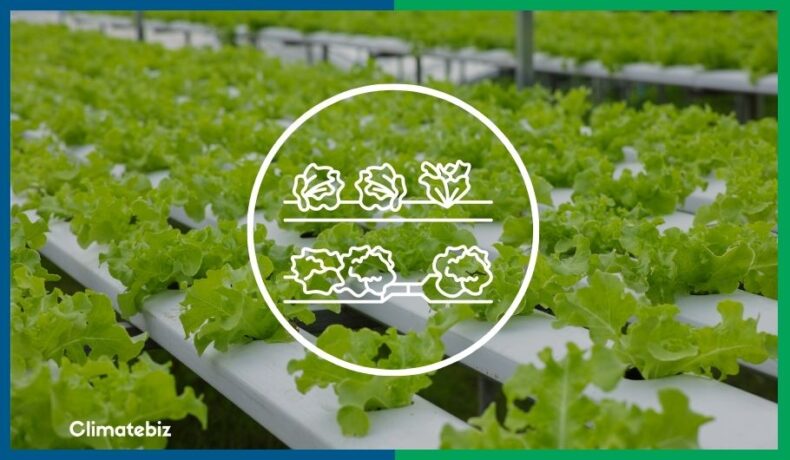Hydroponic lettuce is a game-changer for those of you growing great greens without soils!
Let’s face it, the climate is changing, and our growing environments are not particularly ideal or spacious anymore.
Where you might have once found yourself in moderately timed seasonal changes and looked out into open spaces, you now experience heat waves and often see a vast concrete horizon.
Worry not, for this article brings good news — a way in which you can grow lettuce indoors and upwards. Using this method will provide you with a secure and controlled approach to harvesting an abundance of vitamins right under your roof.
Read on to find out how you can grow variations of lettuce hydroponically.
Lettuce begin!
Table of Contents
What Is Hydroponic Lettuce?
Simply put, hydroponic lettuce is lettuce that is grown using a hydroponic (soilless) system.
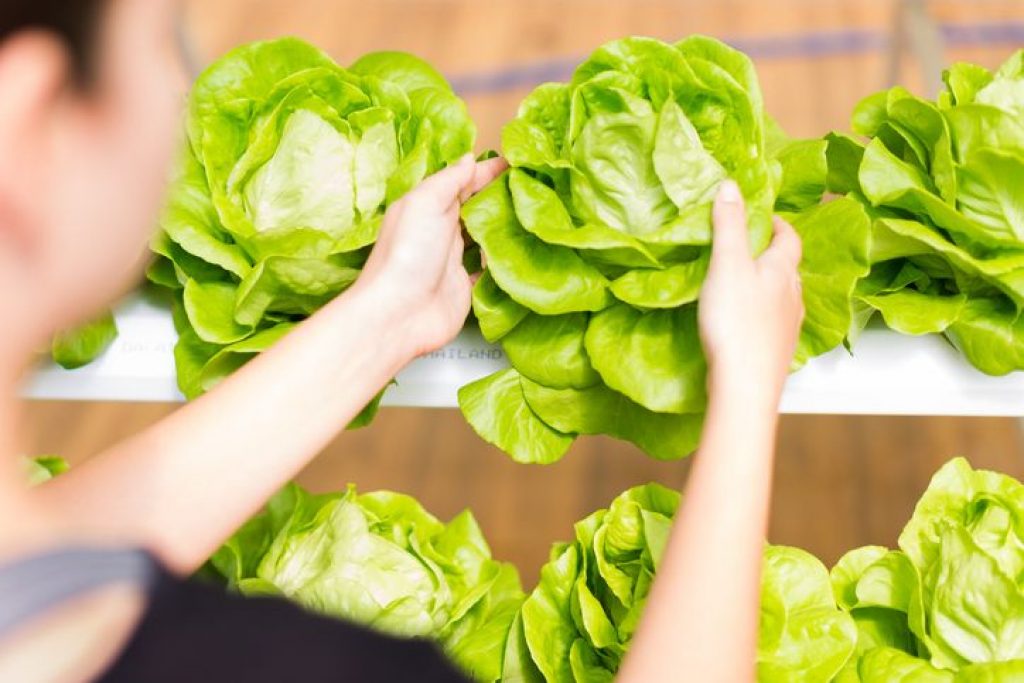
Source: iStock
How Exactly Is This Done?
For you to gain an understanding of the entire system, it’s best to start at the very beginning — understanding hydroponics.
Hydroponics is a method used to grow a variety of vegetation with a static or dynamic nutrient-rich aqueous solution — while skipping the soil substrate.
There are two hydroponic techniques commonly used for lettuce. These are known as closed systems and include the following:
| Hydroponic Technique | Explanation |
|---|---|
| Deep Water Culture (Floating Raft Technique) | A technique known as deep water culture, where seedlings are placed into little holes made in a foam raft or platform. Roots grow directly into the nutrient reservoir below. These can be made to support individual plants or many plants at once. |
| Nutrient Film Technique (NFT) | A technique where the roots of plants are exposed in separate channels. Roots are suspended, and nutrients stream over them. These structures support many plants at once. |
What Lettuce Is Grown Best With Hydroponics?
Now that you know the basics of hydroponic lettuce, it’s time to tackle the types you can grow!
The most popular types of lettuce are:
- Butterhead lettuce,
- Romaine lettuce,
- Looseleaf lettuce.
Let’s have a closer look at each type.
Butterhead Lettuce

Source: StockFood
This species of lettuce leans more towards the sweeter things in life!
Rich in vitamin A and K, you simply can’t go wrong if you choose to grow this buttery beauty.
Romaine Lettuce
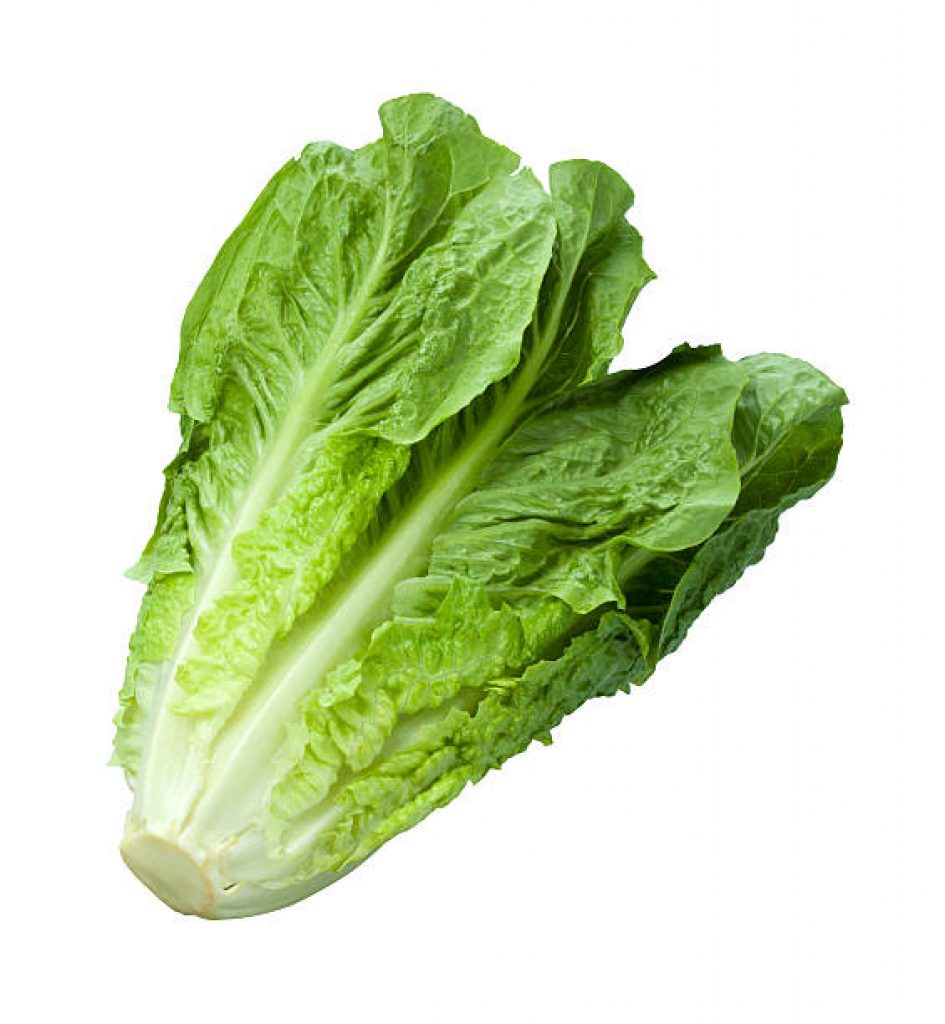
Source: iStock
Perfectly suited for hydroponics, Romaine Lettuce is an ideal variant for delicious salads and for maintaining overall health.
An ideal meal addition for keeping up the body’s immunity!
Looseleaf Lettuce
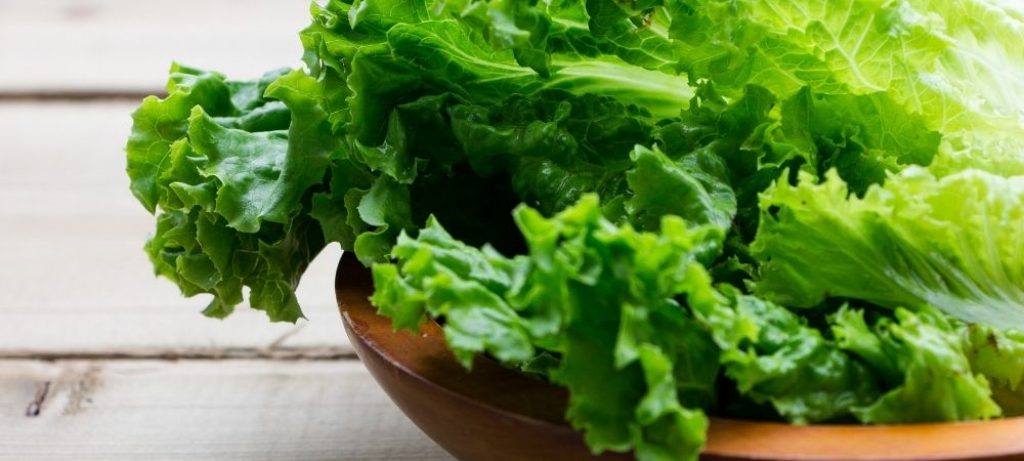
Source: University of Nebraska
Looseleaf lettuce is bursting with vitamin A and folic acid.
This type of lettuce is deemed the easiest to grow — coining the phrase, ” just plant, water, and eat.”
A great go-to option if you’re just finding your green fingers!
Exiting Extra: Complimentary Crops
Although this article focuses on growing lettuce hydroponically, there is the option of growing complimenting crops alongside your luscious leaves!
Vegetables such as spinach are great for growing in the same system.
But wait, there’s more!
Hydroponic systems support an array of herbs (like basil), allowing you to diversify and go big if you wish!
How Long Does Hydroponic Lettuce Take To Grow?
Generally speaking, you can expect an entire crop of hydroponic lettuce to be ready after around 45-65 days.
This plant is the gift that keeps on giving because, believe it or not; the leaves can be individually harvested to allow more growth of baby leaves!
Simply put — more crispy freshness for you.
What Hydroponic Setup Is Best For Lettuce?
The two best setups for growing lettuce hydroponically are a floating raft technique or a nutrient film technique.
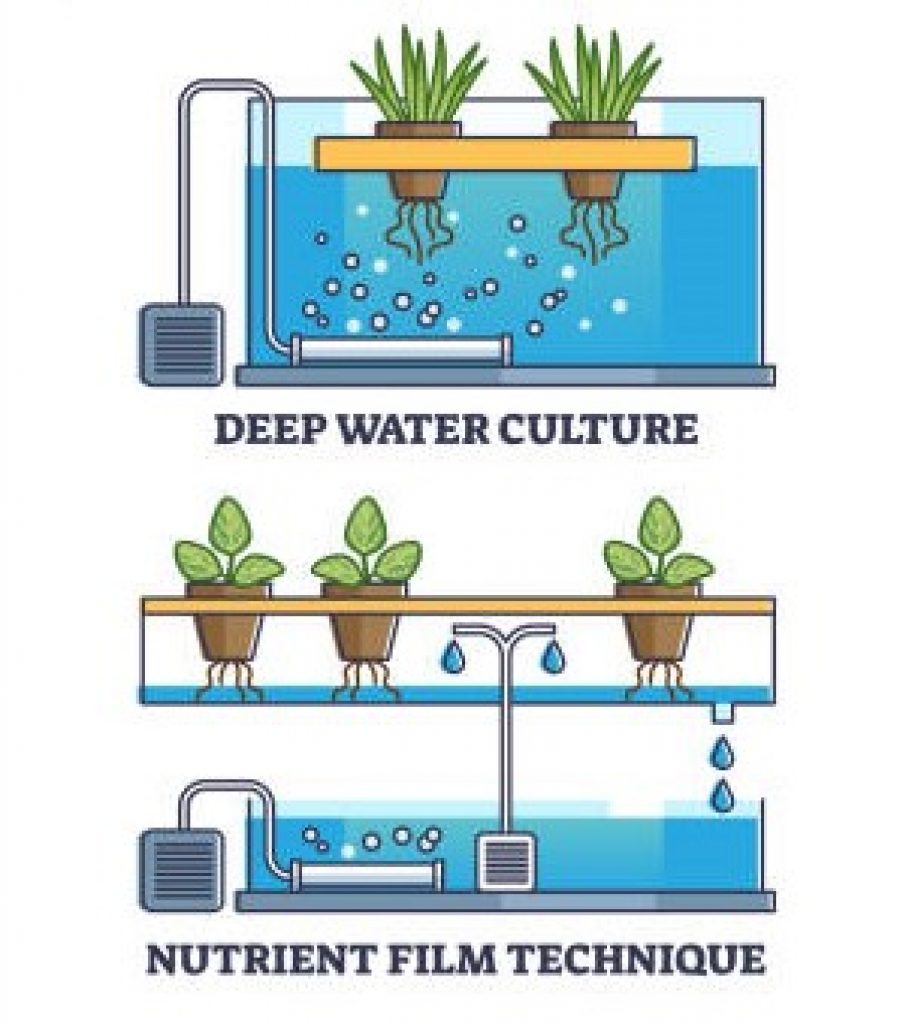
Source: iStock
Let’s take a closer look at what these entail.
Deep Water Culture (Floating Raft Technique)
The floating raft setup for growing lettuce hydroponically is best for a simple system. However, this technique can become increasingly complex if you combine fishkeeping with plant growth.
In this system, you can expect a few setup variations, including the traditional method, bubbleponics, recirculating deep water culture, and the Kratky method.
The traditional method is the best option if you’re after a more straightforward technique. But, let’s take a glance at the differences in these methods in case you’re looking to go bigger:
| Deep Water Culture Technique | Explanation |
|---|---|
| Traditional Method | A floating raft containing plants is placed in a nutrient reservoir, and the air is pumped into the reservoir solution. |
| Bubbleponics | Floating sheets are placed in a nutrient reservoir where the air is added. The solution is pumped up and over the plants, where it then flows over the roots and back to the reservoir. |
| Recirculating Deep Water Culture | Separate floating rafts containing plants are placed into numerous containers connecting to a single reservoir. The nutrient solution is circulated to each container and fed back to the reservoir. |
| Kratky Method | A floating raft containing plants is placed in a nutrient reservoir below, and no air is added. There is a gap between the roots and solution to allow nutrient and air uptake. |
For this setup, you’ll need to purchase the following components:
- A bottom reservoir
- Air or water pumps with piping
- Airstones and a pH kit
- Net pots and a suitable growing medium
Nutient Film Technique
Do you find yourself leaning towards a setup that can stand upright? Then the nutrient film technique is for you!
Ideal for vertical gardening (both indoor or on your balcony), grow towers, and even vertical aquaponics — the nutrient film technique has a lot to offer.
For this setup, you’ll need a few essential components, including:
| Component | Function |
|---|---|
| Suitable plant containers | Structural support for the plants placed in growing gullies or channels. |
| Growing gullies or channels | The spaces allow plant roots exposure to a flowing stream of water and nutrients. |
| A water pump and pipes | The transport mechanism for water and nutrients to flow over exposed plant roots. |
| A bottom reservoir structure | A foundation that holds water and a mixture of essential elements to provide plants with adequate nutrition. |
| Nutrients or essential elements in a solution | A substitute for the nutrients usually occurring in soils, vital for plant growth and survival. |
Now to delve into the technicalities of the nutrient film technique!

Source: Garden Ambition
Once the structure is set up, and plants are placed, a nutrient solution is pumped up from the reservoir below and steadily streams over the lowest area of plant roots.
The solution mixes with air as it flows back down and returns to the reservoir underneath.
What Nutrients Does Hydroponic Lettuce Need?
Nutrients — do plants need them and are they that important?
In short, yes!
Just like your body depends on nutrient intake to grow cells, fight off disease, and continue functioning, the same goes for plants.
Plants need roughly 13 nourishing nutritional elements. These are categorized as macronutrients (nutrients required in larger amounts) and micronutrients (nutrients required in smaller quantities).
Macronutrients include nitrogen, potassium, calcium, magnesium, phosphorus, and sulfur.
Micronutrients include magnesium, iron, zinc, copper, chorine, boron, and molybdenum.
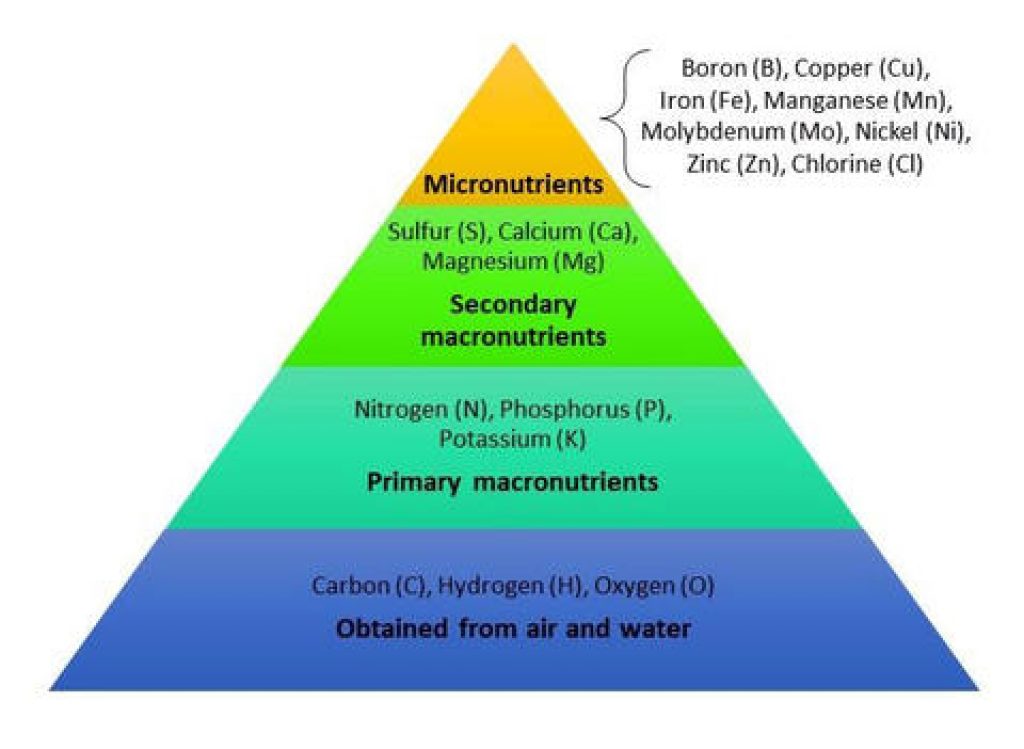
Source: University of Minnesota Extension
Alongside these elements, plants need carbon, oxygen, and hydrogen, which they gain from their surrounding environment (the water and air they receive).
Now, where would you find these essential elements for your lettuce?
You can simply purchase a ready-mix online or even make them yourself!
How Much Light Do Hydroponic Lettuce Need?
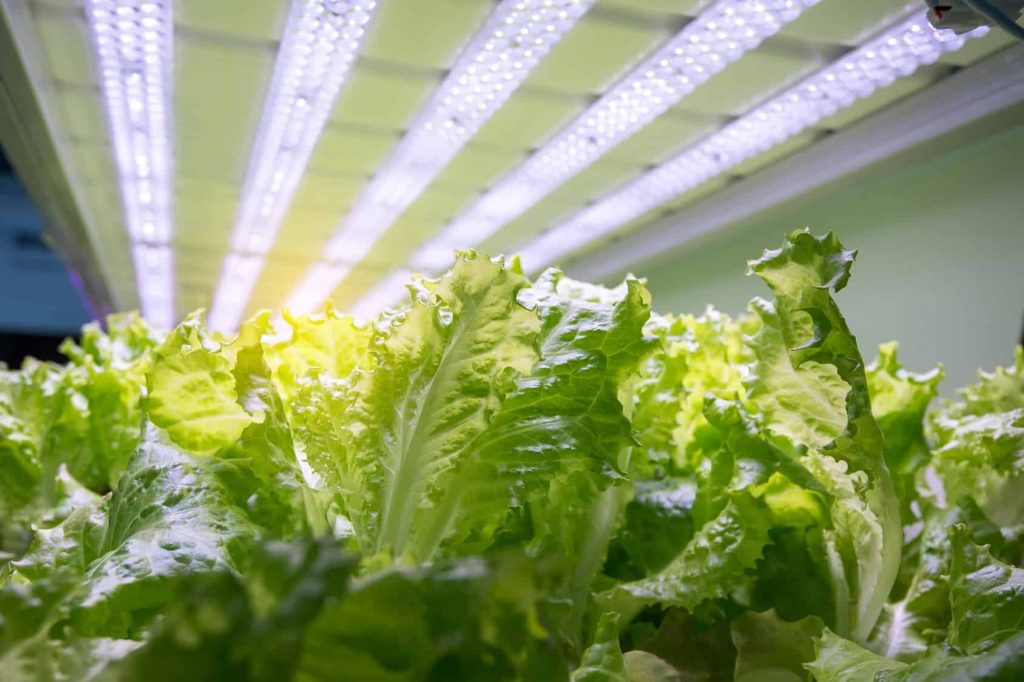
Source: Rural Living
Lettuce requires roughly 10-12 hours of light per day.
The amount and strength of this light determine the taste of your lettuce leaf. In fact, harsher light increases the bitterness you’ll experience in a leaf.
There are ample grow lights right at your fingertips if you’re going the indoor route. These range from high-intensity discharge lights to LED lights.
Simply put, no matter how dim your setup may appear- there is a bright solution for your needs out there!
How To Grow Hydroponic Lettuce Step-By-Step
Step 1: Choosing Your Facility
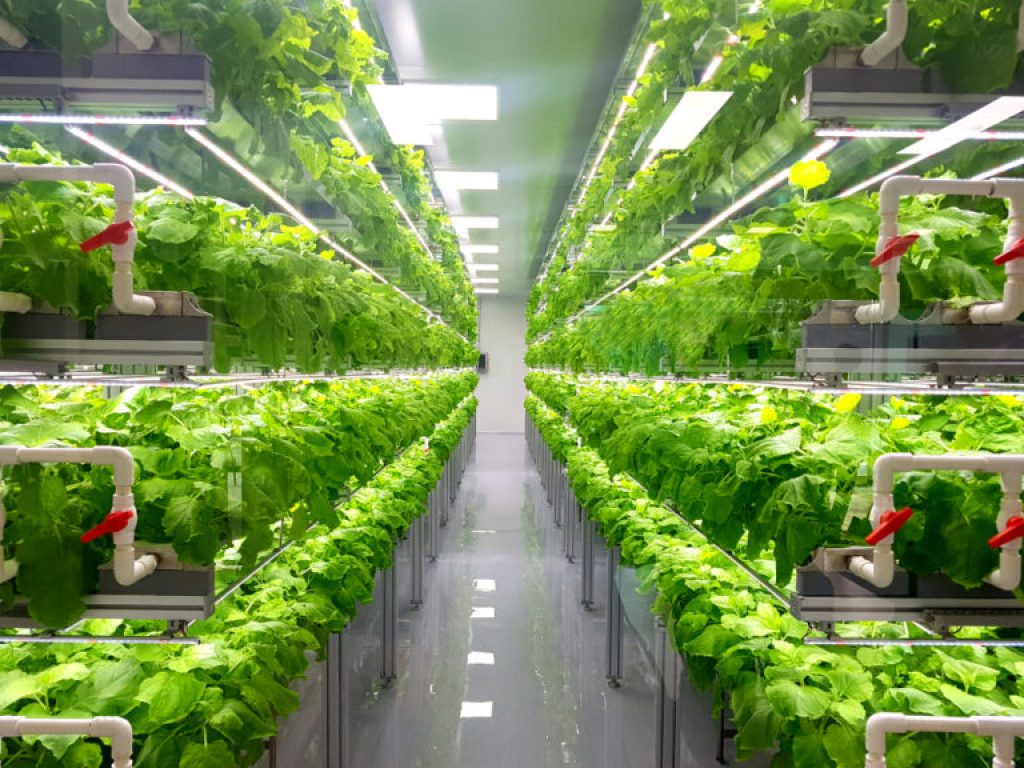
Source: AgFunder
The first step you need to take is finding a suitable location for your setup.
If you’re looking to keep it simple, then a basement, balcony, or garage is a perfect space to use.
Should you wish to go bigger, you may need to consider renting an open indoor space that won’t be too heavy on the pocket in terms of rent and energy usage.
Step 2: Deciding On And Setting Up The Technique
The technique you plan on using is crucial for future work to come.
Each technique requires specific equipment, space, future maintenance, and monitoring, so choosing the most suitable one for you is crucial!
Step 3: Selecting Seeds
Now that you have your space and technique sorted, you can choose your species.
Be it one type of lettuce or a combination of many – the fresh, lush leaves await!
Step 4: Planting
To plant your lettuce seeds, simply place them evenly over the growing medium of choice.
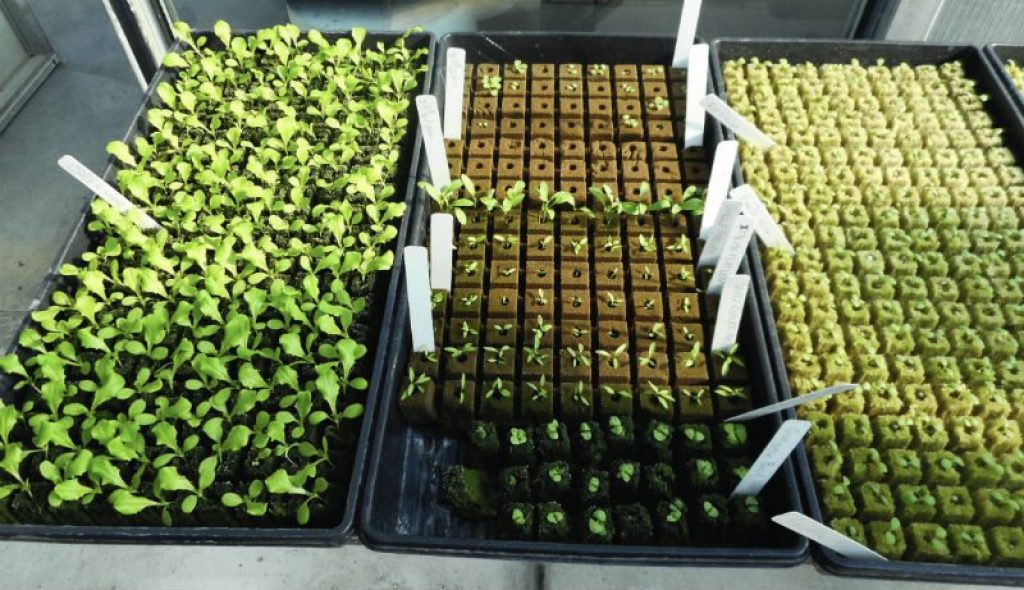
Source: Greenhouse Product News
Keep your system in the dark for the first three to four days to allow seed germination.
After that, adequate light is necessary.
Once your seeds become seedlings, transfer them onto a floating raft growth medium and let the budding abundance begin!
Step 5: Measuring, Monitoring, And Maintenance
How does the saying go?
“If you can’t measure it, you can’t monitor it.”
Measuring various parameters such as leaf color and pH level allows for successful system maintenance.
Hydroponic Lettuce Plant Care
Regular monitoring of your plants is an absolute must!
These leafy greens speak bounds through the color of their leaves, providing a good indication of their health status.
Keeping a close eye on them gives you time to adjust elements within your system and secure a successful season of growth.
System Maintenance
Maintaining the pH balance of your system cannot be emphasized enough!
The pH indicates how acidic or basic your water and nutrient solution is crucial for plant success.
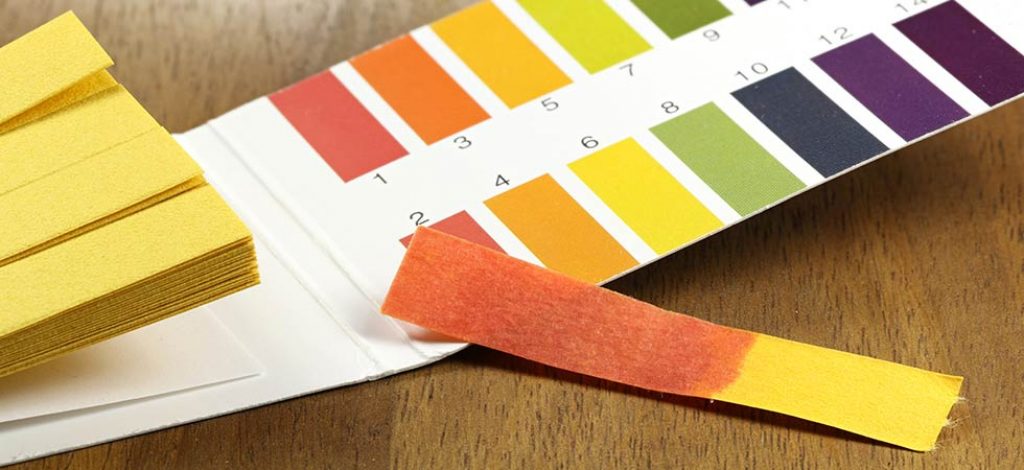
Source: NCH Europe
Maintain an optimal pH for your lettuce through regular measuring and solution adjustment. Furthermore, find a pH kit online or at your local gardening center to adjust your system accordingly.
Maintaining the environmental temperature and pressure best suited for your lettuce also forms an integral part of the process. Consider using a thermostat and/or dehumidifier to ensure you stay within your optimal ranges.
In addition, keep your system clean by emptying and cleaning the components after each harvest. This way, you avoid unwanted algae, bacteria, and uninvited critters!
Step 6: Harvesting Your Hydroponic Lettuce Crop
Finally! The best part of the process is here!
Harvest your lettuce crops by snipping the outer leaves first. These leaves are the oldest, and cutting them first leaves space for the baby leaves to expand.
This technique provides up to four harvests per plant in a single season.
Final Thoughts
Whether loose leafed or butterhead, growing lettuce hydroponically is an absolute win!
This veggie is relatively straightforward to grow and adaptable to suit several hydroponic systems.
The take-home message here is to research what space is available for you, your best-suited system, and to do sufficient research about the requirements of your lettuce of choice.
Take your time; the possibilities are endless!

